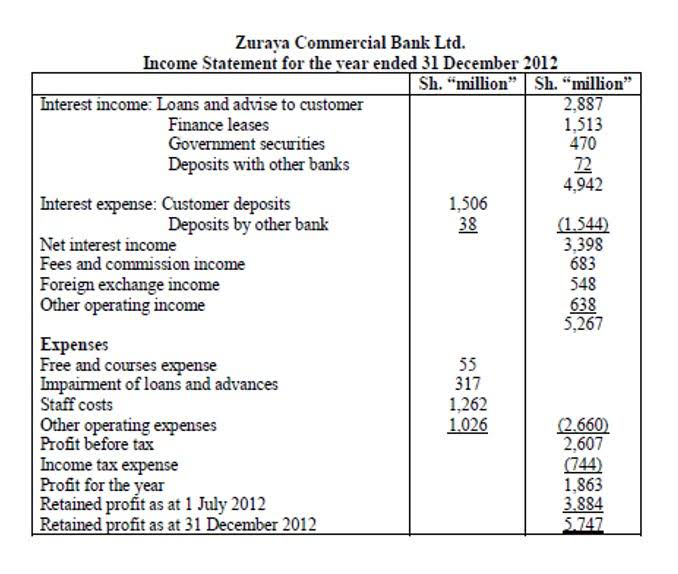- 6950 Aragon Cir Ste 6, Buena Park, CA
- 714-736-0221
- [email protected]
Content

Such transmission of your personal information is done at your own risk. Derivatives have built-in financial leverage, the source of power that underlies derivatives trading.

For this reason, practitioners must be aware of the benefits of Sec. 475 and whether their clients’ stock trading activities may qualify. This article focuses on the operation of Sec. 475 and recent developments.
In most cases in which a court found the taxpayer to be a trader, trading was the primary income-producing activity. If trading is not a full-time endeavor—the taxpayer does it sporadically or only on a part-time basis or is retired—it might be very difficult for an individual to prove that he or she is truly carrying on a trade or business. Nevertheless, the Tax Court believed that the pattern of buying and selling stocks was not sufficiently regular and continuous throughout the entire year to constitute a vade or business. Mark-to-market enforces the daily discipline of exchanges profit and loss between open futures positions eliminating any loss or profit carry forwards that might endanger the clearinghouse.
Sec. 475 is mandatory for dealers in securities but is elective for dealers in commodities and traders in securities or commodities. The procedures for filing the election are relatively straightforward, but importantly, because mark-to-market is a method of accounting, the taxpayer must observe the rules for a change in accounting method. It’s easy to see why mark-to-market accounting can be used for assets with a high degree of liquidity, because the current market price of many of these assets is readily available, even to everyday retail investors. But for assets with a lower degree of liquidity, such as inventory, business equipment, or real estate, obtaining the current value of the asset can be more difficult and require the services of an appraiser. In some cases , the IRS has laid out rules around how much an asset can depreciate, so guesswork or assessment is taken out of the picture.
2 This has revolutionized trading, enabling anyone to trade whenever and wherever at the click mark to market accounting of a mouse. In short, day trading has become increasingly popular among even casual investors.
In Archarya, 9 a finance professor at the University of Illinois–Chicago tried to characterize himself as a dealer in order to convert a net capital loss of $117,000 into an ordinary loss. Professor Archarya argued that he was in the business of buying and selling stock.
As one might expect, there are no specific guidelines regarding any of these variables, the number of trades per year, the length of the holding period, or the total activity during the year. However, a review of the relevant cases does provide some insight into the standards a taxpayer must meet to achieve trader status. As a result, traders must recognize all gains and losses on the constructive sales as of that date.
Under Sec. 1236, the gains and losses of a dealer that arise from sales of securities are not considered gains or losses resulting from the sale or exchange of a capital asset. 4 Instead, the dealer’s gains and losses from sales of securities are treated as ordinary income or ordinary loss from business transactions (i.e., the sales of inventory). However, under Sec. 1236, a dealer can obtain capital gain and capital loss treatment if the dealer clearly identifies the securities in his or her records as securities held for investment. Importantly, Sec. 475 requires dealers to report using the mark-to-market method of accounting. Under Sec. 1236, the gains and Iosses of a dealer that arise from sales of securities are not considered gains or losses resulting from the sale or exchange of a capital asset.
Enron was a conglomerate that specialized in energy production and commodities, eventually transitioning into certain financial services . The Enron scandal and its subsequent downfall isthestock market drama of the last several decades. Enron’s fall from grace cost thousands of Americans their jobs and shook up Wall Street. Stock prices plunged from more than $90 to 26 cents before they filed for bankruptcy. There’s no mystery as to how such a massive corporation disintegrated almost overnight—it’s because it had an outstanding history of deceptive business practices. Additionally, Enron also used special purpose entities to hide a high amount of debt and soured assets from their creditors and investors.

Distinguishing a dealer from a trader or investor is normally not difficult. A dealer makes money by serving as a middleman—a market maker—holding securities as inventory and buying and reselling securities to customers.
If a firm sends a mark to the market demand to another broker dealer, the demand must be met promptly. A mark-to-market system can result in new complexities and compliance costs for taxpayers and levy taxes on unrealized (“paper”) income, ultimately reducing saving and investment to the detriment of the broader economy. In order to fully appreciate a futures contract’s final daily settlement price one needs to know the settlement procedures defined in the contract’s specifications.
